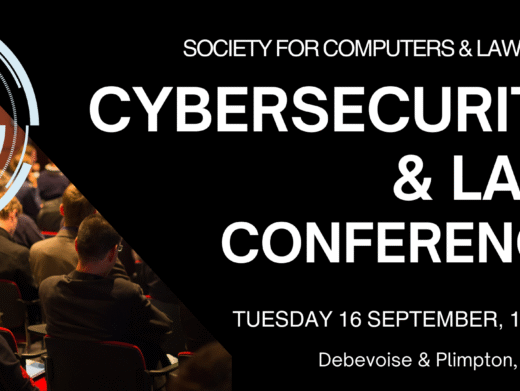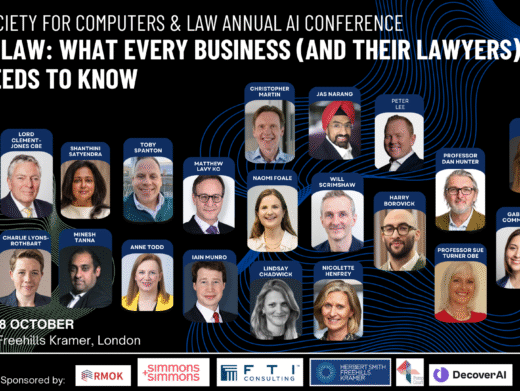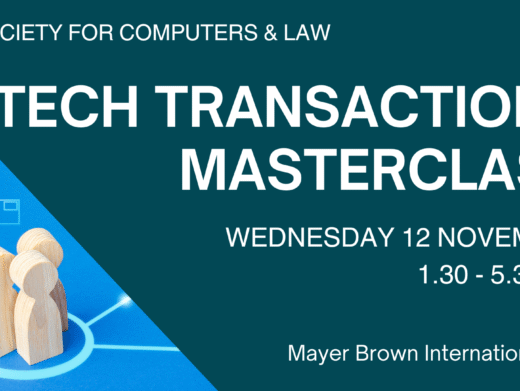He has a particular interest in matters relating to electronics and IT. FredBlakemore BScTech, Chartered Patent Agent, European Patent Attorney is aconsultant with Bristows. Fred has extensive IP management experience, writesand lectures on IP topics and is a member of a number of industry associationsconcerned with IP.
It is a traditional view that inventive methods of doing business andcomputer programs per se are unpatentable under UK and European law. However, aswill be described in this article, firm proposals are underway to changeEuropean legislation in this area.
Priceline and the USA
Undoubtedly, the main driving force for change comes from the USA. There thelaw on patentability is different, as the recent flurry of patent litigation andapplications claiming methods of doing business over the Internet demonstrates. 1One such example is US patent number 5,794,207, issued in August 1998 andsubsequently assigned to priceline.com. This was issued a few days after thelandmark US Court of Appeals decision in State Street Bank v SignatureFinancial Group, a case widely viewed as clearing the way for patentsclaiming methods of doing business over the Internet. 2
The priceline.com patent relates to `reverse auctions’ – a scheme whereby`buyers are able to name their own price for goods and services from largebrandname companies’. 3 Buyers who visitpriceline.com’s Web site follow a series of steps in which they specify thegoods or services they want, the price they are willing to pay and guarantee theoffer with their credit card details. Priceline.com then finds a seller who willrelease the goods or services at that price.
Lest anyone underestimate the effectiveness of such a scheme, priceline.comproclaims that 50,000 leisure airline tickets were sold in their first 120 daysof operation and that sales of over $2 million of new cars were made in itsfirst 45 days of operation in the New York metro area. Just as importantly,independent studies in September 1998 4 showed that62.5 million US adults, that is 32.2% of all US adults were aware ofpriceline.com as a brand. In other words, it became a `household name’ withinabout six months of commencing trading.
The patent claims a method of using a computer to facilitate a transactionbetween a buyer and at least one seller which comprises various steps ofinputting and outputting appropriate information to the computer. It also claimsapparatus comprising a storage device, a processor and a program (the claimwould include most computers) which operate in a specified manner. There are 44claims in total, of which four are independent. Of these, two cover products andtwo processes.
European and UK Developments
Readers will no doubt be aware that the 1997 Green Paper on the CommunityPatent and the Patent System in Europe raised some pertinent questions fordiscussion on the patentability of computer programs and software-relatedinventions. 5 Although the Green Paper acknowledgedthat the information society and e-commerce offers Europe a genuine economicopportunity, it did not directly address the issues of patentability of businessmethods.
There is now a strong movement to change European legislation in order toensure a global level playing-field. In its recent follow-up 6to the Green Paper, the Commission announced that it will soon present aproposal for a Directive with a view to harmonising Member States’ legislationon the patentability of computer programs. Another motivation behind this is toensure that the internal market operates fully and properly in the field ofinventions regarding computer programs.
Comments have been invited from interested parties. Exactly how thelegislation is to be changed will be an important issue facing Europe. It isclear that patentability of computer programs will not be achieved by simplydeleting the words `as well as computer programs’ from the list of items thatare not considered inventions in Art 52(2)(c) of the European Patent Convention(to which s 1(2)(c) of the Patents Act 1977 corresponds).
The European Patent Office, being an inter-governmental body broader than theEU, is not within the direct control of the Commission. The Commission cannotitself amend the EPC and, accordingly, there may be some delay whilstappropriate inter-governmental consensus is obtained.
One interesting area of discussion will be the concept of a patent as a`technical solution for a technical problem’ and, in particular, how to dealwith inventions which might not intrinsically be regarded as technical solutionsto technical problems, such as computer programs for games or those relating toeconomic and financial operations. From the e-commerce perspective, it would beprudent to tackle issues concerning the patentability of business methods at thesame time.
Another important issue will be defining the scope of infringement. As theCommission pointed out in its follow-up to the Green Paper, in the USA, theowner of a patent covering a programme may sue the distributor of counterfeitprograms distributed via a medium, eg disks (`direct infringement’). However, inEurope, since protection is limited to the technical invention which uses theprogram, the distributor of the disks may (usually) only be sued for`contributory infringement’. This means that in Europe the patent owner wouldfind it more difficult to succeed in an action for infringement against such adistributor.
Apart from what should constitute infringement, the global nature of theInternet means that there will be jurisdictional issues to resolve. For example,if a European undertaking has a European patent for a method and apparatusrelating to e-commerce, does a US resident offering the claimed method orapparatus to Internet users globally (ie to both users in the USA and in the EU)infringe the patent and, if so, to what extent? These sorts of issues, and inparticular the geographically opposite situation, are themselves drivers towardslevelling the global playing-field.
It is worth noting that the recent draft e-commerce Directive is not aimed atpatent matters, and indeed industrial property rights are expressly excludedfrom its coverage. 7 The draft Directive seeks toensure the proper functioning of the internal market, particularly the freemovement of `information society services’ between Member States. It aims toapproximate national regulations concerning matters such as the establishment ofservice providers, commercial communications, electronic contracts and theliability of intermediaries, and also contains provisions relating to disputesettlement and administrative co-operation.
Unlike some aspects of biotechnology, there is no objection in Art 27 of theTRIPS Agreement to patents for business methods and software. Indeed, manyinterested parties (for example, the UK’s Chartered Institute of Patent Agents (CIPA)),support the requirements in Art 27 that patents must be available for `anyinventions, whether products or processes, in all fields of technology, providedthey are new, involve an inventive step and are capable of industrialapplication’. CIPA commented that this provision should apply equally tosoftware-related inventions. 8 The corollary is thatthe provision should apply equally to methods of doing business, especially ifEurope is not to suffer the competitive disadvantage of being unable to set uppatent monopolies in the area of e-commerce whilst competitors in non-MemberStates can do so.
Spurred by priceline.com’s activities, the UK Patent Office published anopinion 9 on business methods in which it recognisedthat patents for e-commerce mix issues on the patentability of software 10with those relating to business methods. The UK Patent Office also suggestedthere was a lack of a European consensus as to whether Europe is at acompetitive disadvantage by the different approach to patentability in the USA(and possibly, Japan). However, there now appears to be such a consensus andchange is well underway.
The UK Patent Office also recently stated its view that if legislation wasamended to allow patents for software-related inventions then patent offices inEurope could probably surmount any technical difficulties and would be able todeliver such patents with a high presumption of validity. 11
Many in the e-commerce field are filing applications in the EPO oftenclaiming priority from corresponding US documents. There are about 13,000European patents covering software and about 75% of them are held by large non-Europeancompanies. 12 The EPO appears to strive hard tofind any hint of a technical solution to a technical problem (in accordance withthe TRIPS Agreement). A few examples are listed here:
- EP 782,728 A1 (Walker Asset Management) entitled 900 number billing and collection system and method for online computer services (filed 17 May 1996). This is a different application from the assignor of the priceline.com patent.
- EP195 098 B1 (Avedas Inc.) entitled System for reproducing information in material objects at a point of sale location. Filed on 19 March 1985, granted 3 October 1990. This is especially interesting as it is similar to the `E-Data’ patent by the same inventor, Charles Freeny, (US 4,528,643 (FPDC Inc.) filed in the USA10 January 1983, issued 9 July 1985). This was actively licensed and is being heavily litigated in the USA. Most notably, IBM took a licence and litigation was commenced against Compuserve amongst others. The patent covers specific forms of e-commerce where software, music or other information is downloaded by the user. The US patent was issued before the Internet really took off.
- EP 407,026 B1 (Reuters Ltd) entitled Distributed system and method for matching of buyers and sellers, granted in November 1995.
- GB 2,180,380 B and GB 2 161 003 B (Merrill Lynch) entitled Automated securities trading apparatus and Improved system for distributing, processing and displaying financial information, respectively.
The proposed draft Directive on utility models is based on the EPC, soinventions involving computer programs and methods of doing business arecurrently excluded under draft articles 3 and 4. 13 One motivation behind theproposed utility model Directive was to develop a scheme to protect theintellectual property rights of small and medium-sized enterprises (SMEs), thatis the very kind of undertakings which are prolific in e- commerce. There is arisk that the lack of search or examination requirements will encourage a floodof applications (not just from SMEs) with the distinct possibility that some ofthese will relate to e-commerce. For these reasons, and for the sake ofconsistency, any patentability for e-commerce should be mirrored in the utilitymodel scheme.
Conclusion
There is, of course, the `if it ain’t broke, don’t fix it’ viewpoint: someargue that since patents relating to e-commerce have already been granted inEurope, there is no need to change legislation in this respect. This argumentwould be more convincing if existing legislation did not expressly exclude thepatentability of business methods and computer programs and if there were noneof the much-debated difficulties in patenting inventions and enforcing patentscovering inventions in these fields. Nevertheless, the pressure for change isproving irresistible. Unarguably, the scale of protection afforded to computerprograms and business methods must be drafted with care. Being able to reflecton litigation and other events in the USA provides Europe the opportunity tochart a measured and sensible approach to patents (and utility models) in theburgeoning field of e-commerce.
Endnotes
1. See for example numerous press articles such as: Thurm S,WallStreet Journal Europe, 12 October 1998, p 6.
2. Ellis W T and Chatterjee A C, Floodgates open in the USfor software patents covering financial configurations, business models andInternet commerce, Patent World, October 1998, p 15-17 which discusses StateStreet Bank & Trust Co v Signature Financial Group, Inc,US Court ofAppeals (Federal Circuit), 23 July 1998, 96-1237, 1998 WL 409704 (Fed. Cir.1998).
3. As advertised on priceline.com’s site: http://www.priceline.com.
4. Opinion Research Corporation poll, September 1998.
5. Green Paper on the Community Patent and the PatentSystem in Europe COM(97), 314 Final, section 4.2.
6. Promoting innovation through patents: The follow-up tothe Green Paper on the Community Patent and the Patent System in Europe,Commission Communication, 5 February 1999.
7. Proposal for a European Parliament and Council Directiveon Certain Legal Aspects of Electronic Commerce in the Internal Market,unofficial text, provisional final version, 18 November 1998 at Annex II.
8. Green Paper on the Community Patent and the PatentSystem in Europe: Comments and Responses to Questions Submitted, CIPA, v.26,n.11, November 1997, pp 816-844.
9. The UK Patent Office’s Opinion on Business Methods, PatentWorld, October 19 98, p 10.
10. Blakemore F, Patent Protection in UK and Europe forComputer Program Related Inventions, Patent World, November 1995, pp21-25.
11. Haselden D, Patents for Software, the View from theBritish Patent Office, Patent World, September 1998 pp 33-36.
12. Follow-up to the Green Paper, op. cit.
13. Proposal for a European Parliament and CouncilDirective approximating the legal arrangements for the protection of inventionsby utility model, COM(97) 691, 12 December 1997.




